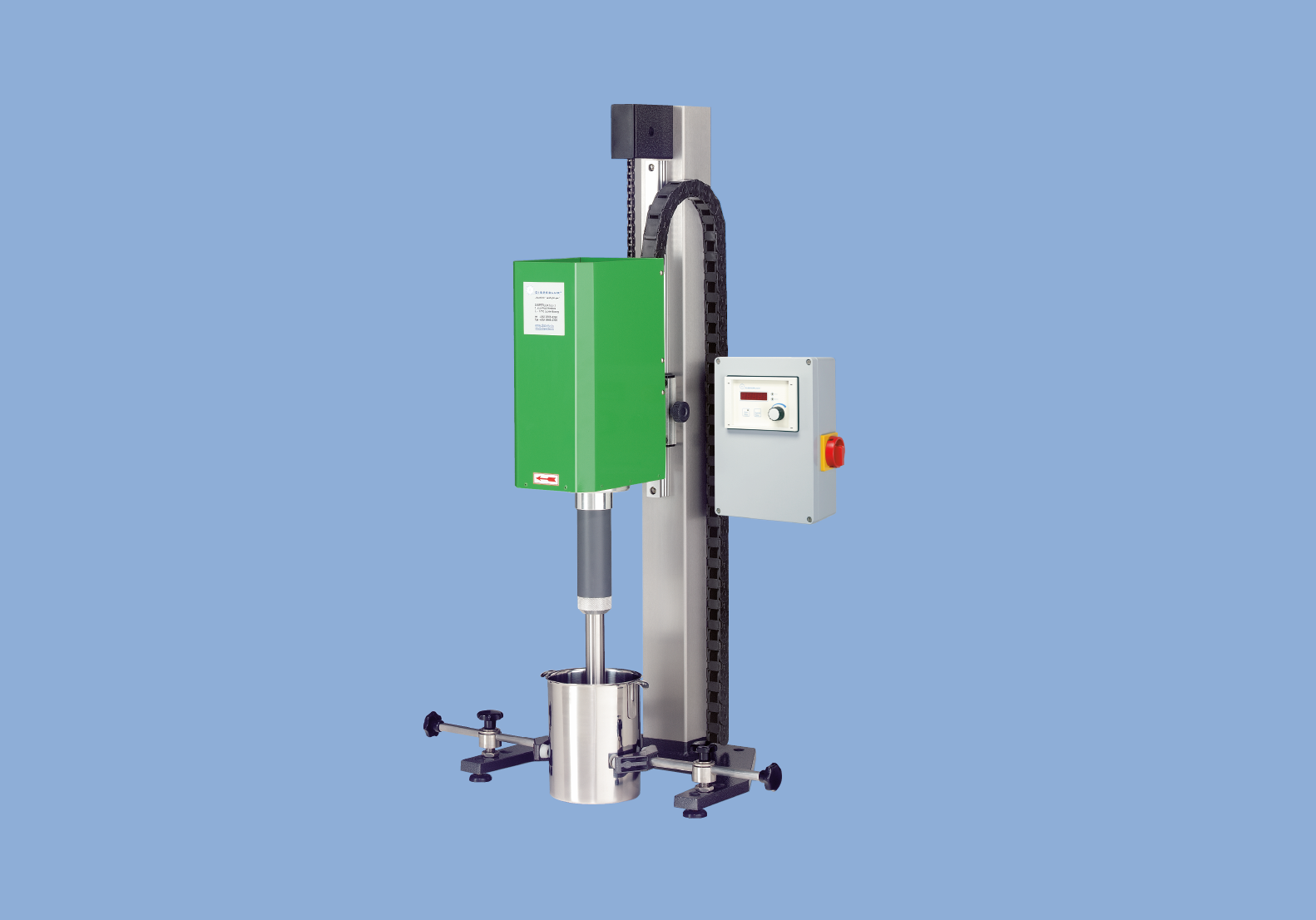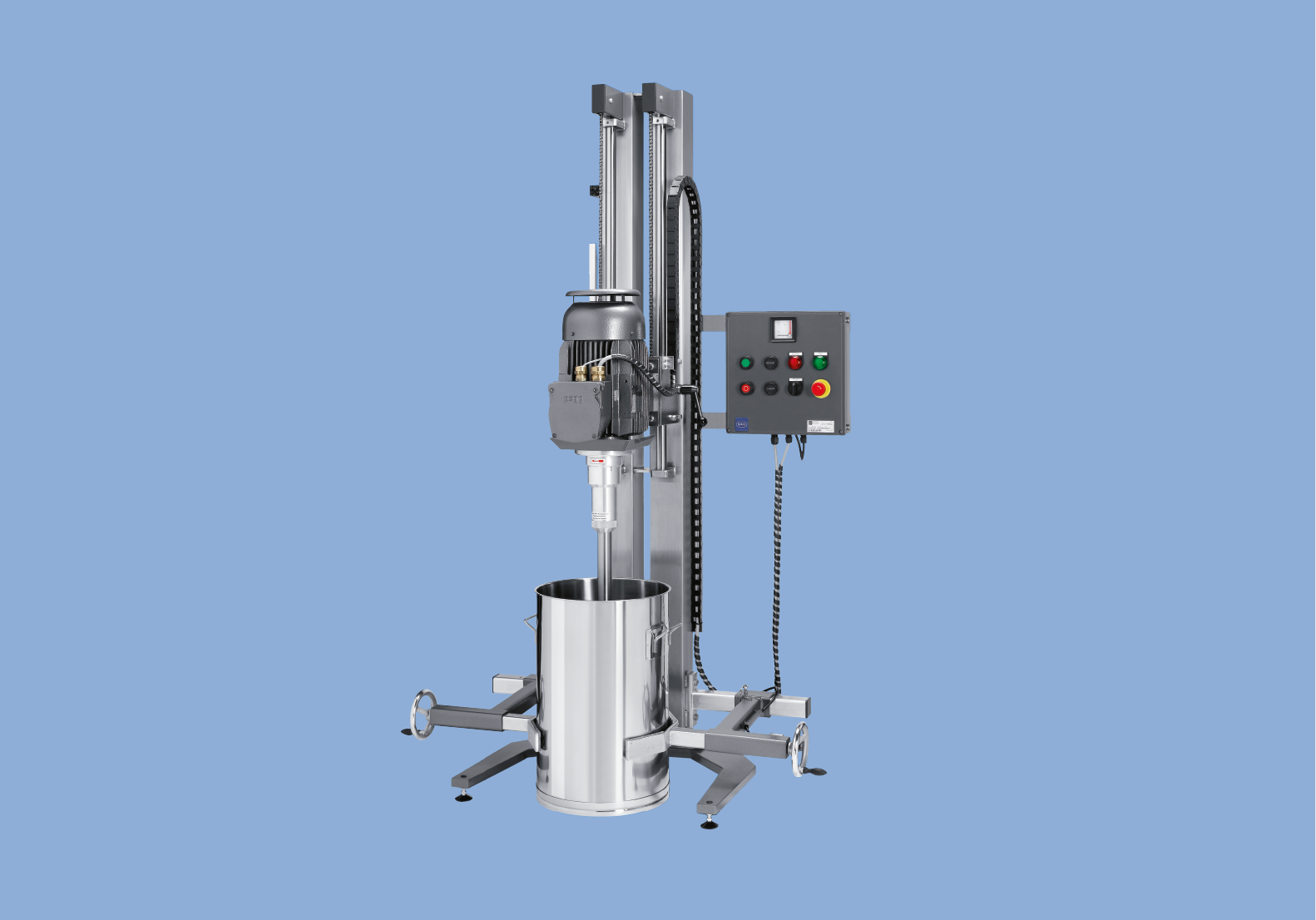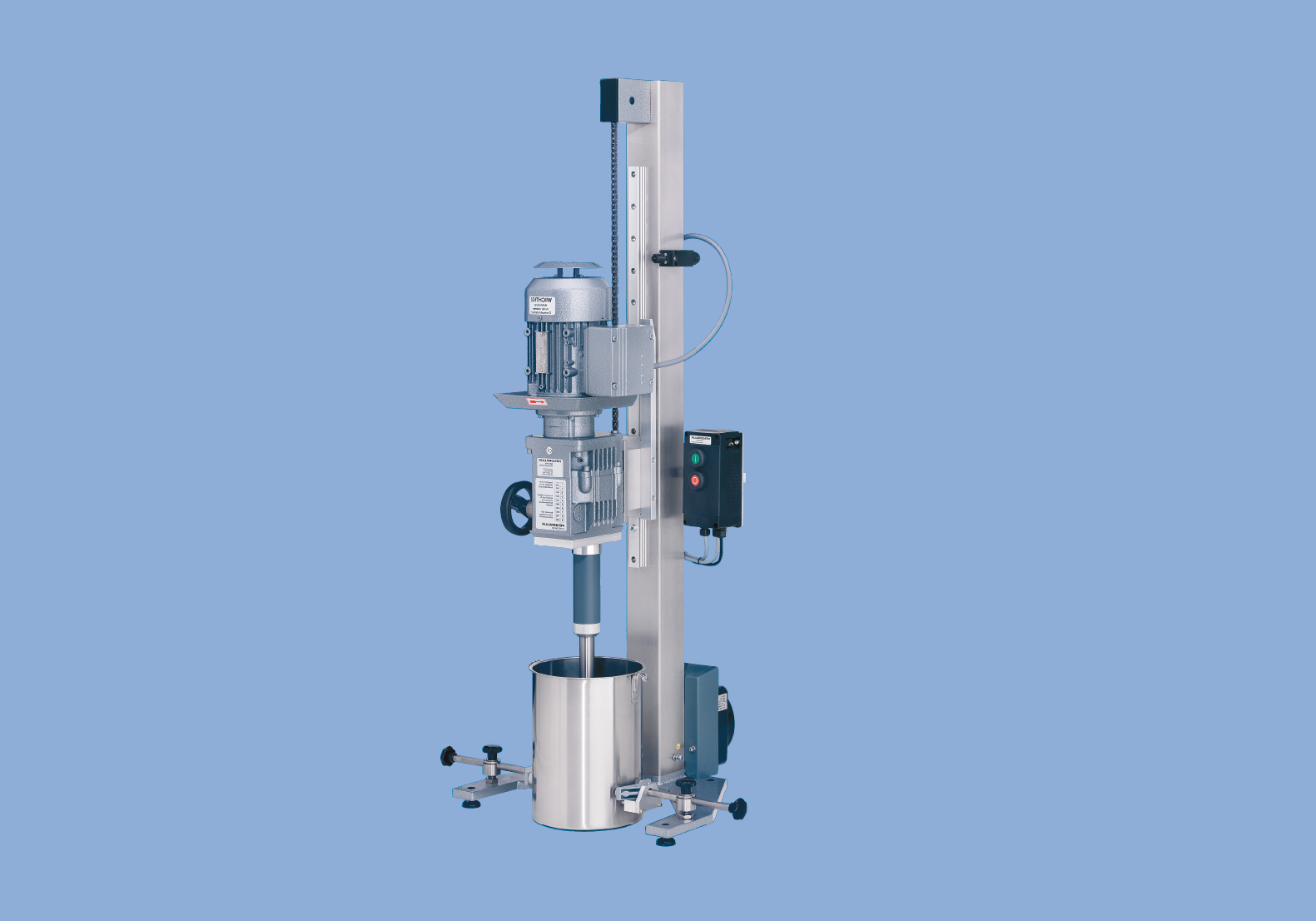Series DISPERLUX® IP
The series Laboratory Dissolvers IP includes high-performance and high-speed machines for dispersing, mixing, solublishing, and stirring.
Series DISPERLUX® EX
The series Laboratory Dissolvers EX comprises high-performance machines incorporating explosion protection under 94/9/EG.
Dispersing Know-How
As a part of process engineering, high-speed dispersing technologies are used for the production of:
- Paints an lacquers
- Coatings
- Chemicals and construction chemicals
- Glues and adhesives
- PVC pastes
- Magnetic tape coatings
- Cosmetic and pharmaceutical products
High-speed dissolvers are used to incorporate fine solid particles into fluids, resulting in colloidal-dispense-systems. During the dispersion process, associated particles are mechanically separated, the surface of these particles is wetted and, due to the stabilisation of the dispersion, renewed association is prevented. In order to achieve best results, we have to respect several rules regarding the geometry of vessel and filling degree, the disc’s diameter and it’s distance to the bottom, a peripheral speed between 18-25 m/s and optimised “millbase” formulations in terms of rheological behaviour.
After the addition of pigments and fillers to the resin solution, the increased speed will put the "millbase" into a laminar rolling pattern. The consequent rotation, during wich the shaft and part of the dispersing disc will become visible, is called the "doughnut-effect". At this stage, the maximum of mechanical input is transferred into the formulated subject: so/ids ' concentration too low will result in low viscosity and less input, so/ids' concentration too high leads to high viscosity and a break-down of the flow.
The distance of the disc to the bottom of the vessel is important as well: a small distance will increase the shear and al lows for higher speeds to increase mechanical influences.
Laboratory results can be scaled up to production while respecting the parameters.
Grinding discs transfer the dissolver into a vertical bead miII at low costs. Our grinding discs with a jacketed milling vessel will avoid high temperatures of the millbase and using them is simple and efficient: the beads and the millbase will be rotating in the vessel with the grinding effect taking place between beads, grinding disc and wall.







